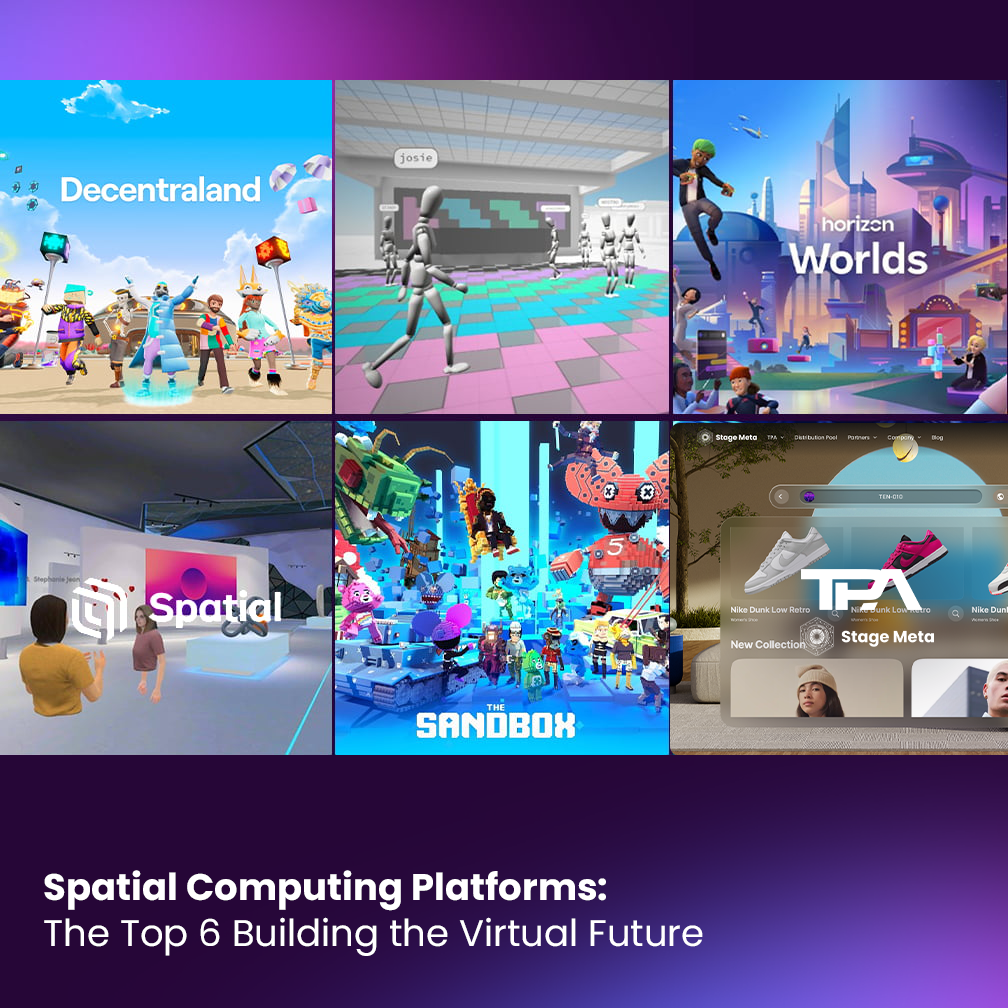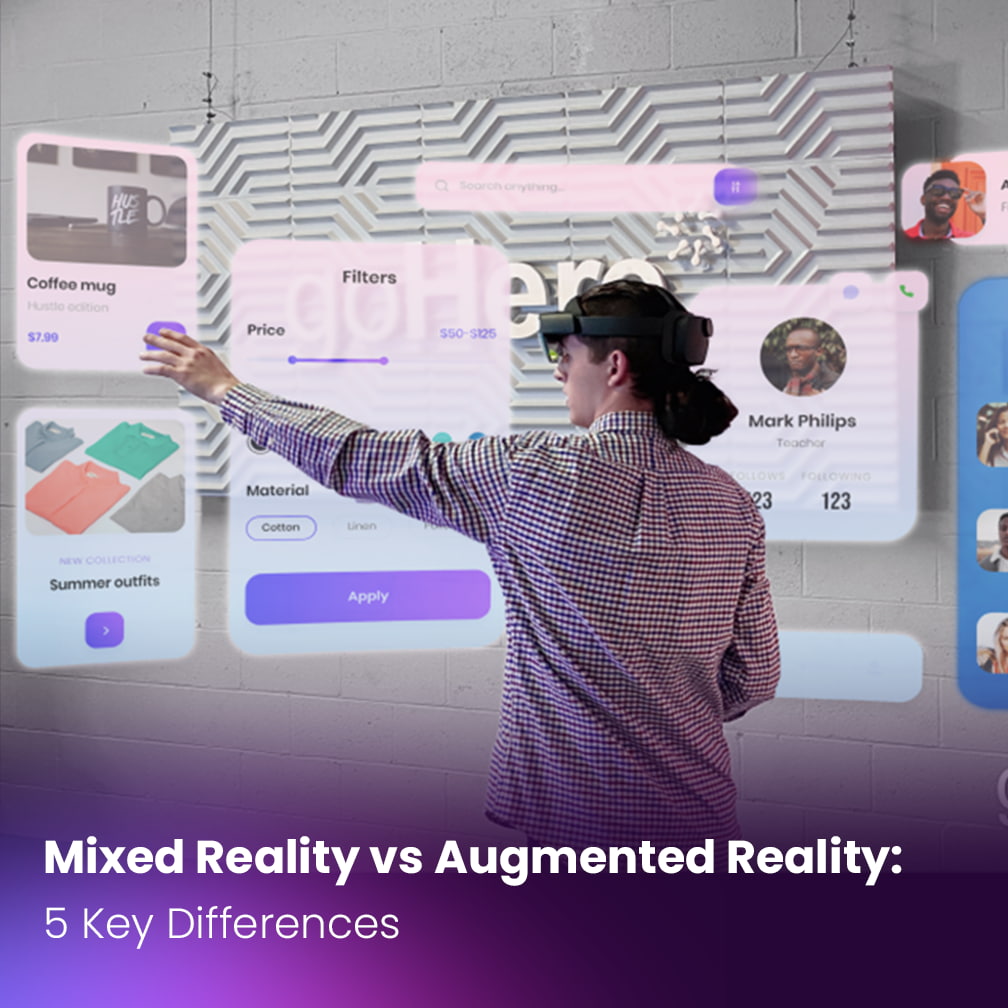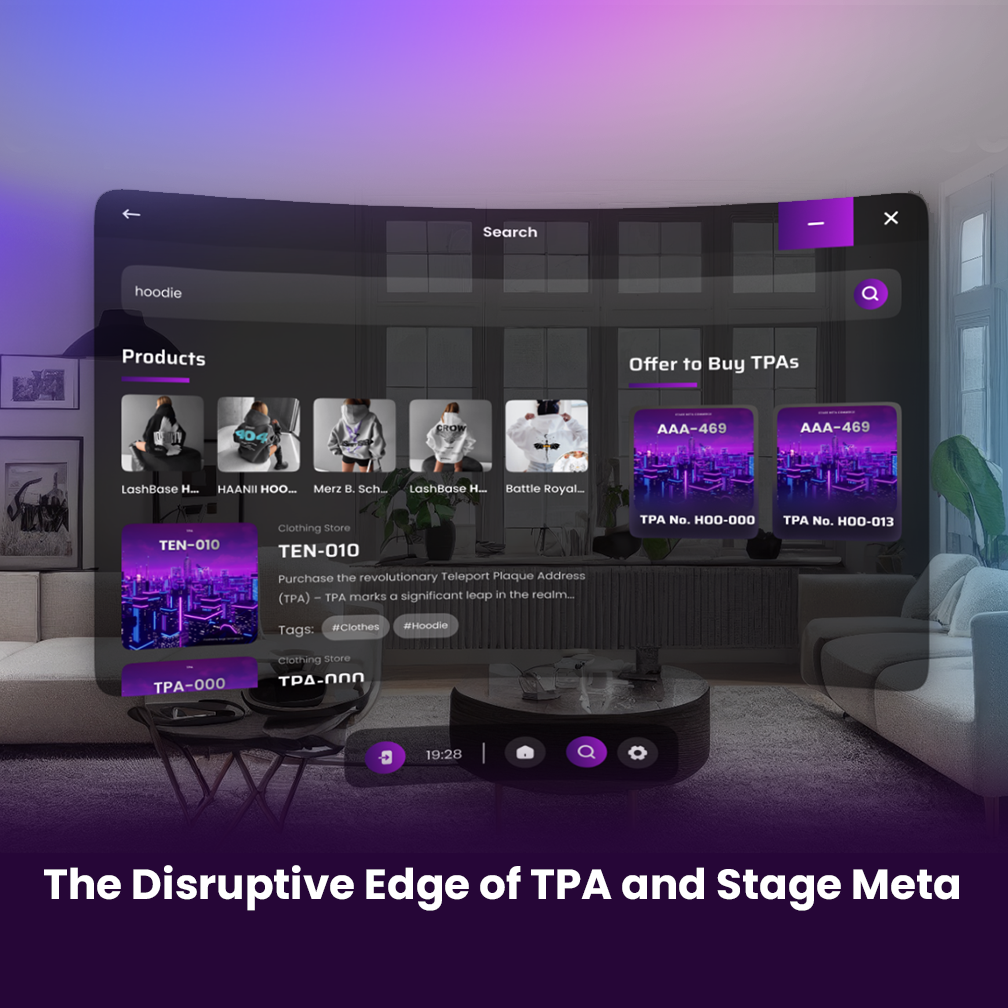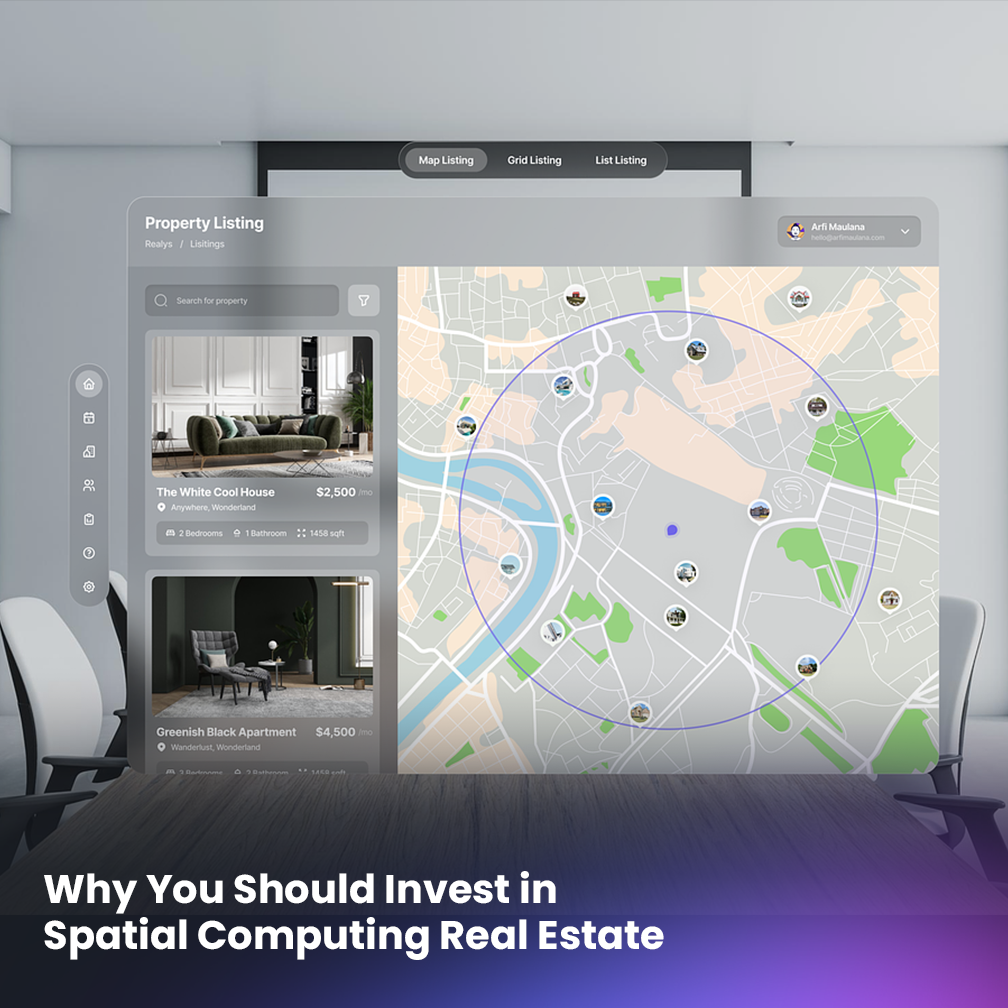Spatial Computing Platforms: The Top 6 Building the Virtual Future

Estimated reading time: 5 minutes
Spatial Computing envisioned by sci-fi is inching closer to reality thanks to pioneering virtual world platforms laying the foundations today. But with divergent visions and technology stacks, not all spatial experiences are created equal.
This guide explores 6 leading spatial platforms pushing immersive digital realms forward in unique ways – Decentraland, The Sandbox, Cryptovoxels, Meta Horizon Worlds, Spatial, and Stage Meta. Grasping their key differences provides perspective on the building blocks crafting the next generation of the internet.
Table of contents
- Decentraland – User-Built World Owned by Its Community
- The Sandbox – Voxel Game World Enabling User-Generated Content
- Cryptovoxels – Virtual World Focused on Avatars, Fashion, and Socializing
- Meta Horizon Worlds – Social VR with Major Backing
- Spatial – Web-Based for Enterprise Use
- Stage Meta – Newcomer Betting on Spatial Computing
- Key Takeaways on the State of Web 3.0
- Final Thoughts on the Road Ahead
Decentraland – User-Built World Owned by Its Community
Decentraland stands out by embodying a fully user-created spatial environment from the ground up. Users can buy virtual real estate and develop experiences atop their parcels.
As a decentralized autonomous organization (DAO), the community collectively governs Decentraland’s roadmap and policies. This grassroots ethos fosters an open, collaborative playground for the spatial environment.
Early iterations prove basic, but the participatory spirit allows Decentraland to organically evolve based on user creativity. For community-driven decentralization, Decentraland leads.
The Sandbox – Voxel Game World Enabling User-Generated Content
The Sandbox merges spatial and gaming concepts by enabling users to create voxel game worlds and assets backed by tokens.
Using in-world builder tools, creators can build 3D environments without advanced coding skills. The Sandbox’s underlying blockchain also allows trading assets and LAND real estate.
Play-to-earn models and accessible worldbuilding attracted lots of buzz. Eye-catching partnerships with brands like Snoop Dogg and Adidas further fuel its popularity. However, realization still lags ambition.
Cryptovoxels – Virtual World Focused on Avatars, Fashion, and Socializing
Cryptovoxels offers a more aesthetic, fashion-focused virtual hangout space centered around customizable avatars.
The built-in marketplace offers digital wearables and accessories to individualize your avatar’s look. Ownership of “parcels” which can be developed into stores and art galleries is represented by tokens.
While smaller in scale than some peers, Cryptovoxels delivers on social interaction and avatar personalization – key for digital identity and expression. A niche to watch.
Meta Horizon Worlds – Social VR with Major Backing
Backed by Meta billions, Horizon Worlds offers an expansive social VR world with creation tools, games, and events.
As Meta’s flagship spatial platform, Horizon Worlds is relatively polished and populous. But concerns around privacy, toxicity, and lack of interoperability remain.
However, Meta’s war chest for aggressive growth and VR headset domination makes Horizon Worlds one to watch despite current limitations. Integration with other Meta apps grants inherent reach.
Spatial – Web-Based for Enterprise Use
Spatial targets enterprise use cases over gaming and virtual commerce. It enables web-based collaborative 3D spaces for teamwork and events without VR equipment.
Compared to consumer-focused rivals, Spatial zeroes in on spatial applications for corporate training, design workshops, and organizational meetings. Even virtual offices now seem feasible.
While less hype-driven than peers, Spatial’s business focus primes it for long-term productivity impact once augmented and virtual reality maturity catches up.
Stage Meta – Newcomer Betting on Spatial Computing
A newer contender aiming to spur spatial adoption is Stage Meta . This platform leverages Mesh AI and Spatial Computing to provide users with immersive digital experiences through an exclusive domain called TPA (Teleport Plaque Address).
Each TPA functions as a unique portal to a plot of virtual real estate that the owner can develop and monetize. Supported by advanced technology, Stage Meta enables anyone to create customized environments without the need for extensive technical skills.
While still in early access development, Stage Meta’s model offers the ability for common users to stake their claim in Spatial Computing. Its seamless TPA Activation aims to facilitate worldbuilding and accessibility.
As virtual worlds evolve, Stage Meta provides an example of harnessing emerging technologies like Mesh AI and machine learning to lower the barrier for individual participation. Democratizing spatial creation could prove a key driver of adoption.
Compared to established players like Decentraland and The Sandbox, Stage Meta’s differentiation lies in its focus on AI-powered tools to enhance creation. Rather than requiring advanced technical skills, Stage Meta aims to enable anyone to craft personalized virtual worlds.
Key Takeaways on the State of Web 3.0
Based on these diverse platforms, some spatial patterns emerge:
- Walled gardens vs. open worlds: Some optimize for control while others embrace third-party creation.
- Functionality focus: Most concentrate on specific verticals like gaming, socializing, commerce, or workflows. An integrated platform remains distant.
- Technological barriers persist: Laggy performance, hardware frictions, and UI deficiencies hamper adoption.
But the pace of iterative improvements across these dimensions feels remarkably swift.
What Will it Take for the True Spatial Computing Era to Emerge?
To reach its full potential, certain developments are key:
- Faster connectivity enabling high-fidelity virtual interaction.
- Shared standards allowing identity and asset portability between worlds.
- Intuitive natural interfaces and augmented/mixed reality maturity.
- Persistent economies with blockchain-enabled digital property.
- Transition from speculation to utility and intrinsic value creation.
Advances across technology, infrastructure, and sustainable business models will determine if a functional platform gels or whether disconnected virtual worlds persist.
Final Thoughts on the Road Ahead
Spatial Computing represents an ambitious vision of interconnected virtual worlds. But frictionless movement between experiences remains elusive.
Rather than a singular spatial platform, diverse platforms aligned by common protocols seems more probable in the near term.
Walled gardens will be forced to open up and cooperate on standards. Interoperability especially for identity, assets, payments and data portability will be critical.
This demands collaboration and compromise – not winner-take-all domination. Spatial Computing will leave many specific ambitions unfulfilled, but better alternatives can arise.
For digital builders, innovation opportunities feel unlimited. Newer players like Stage Meta exhibit the creative potential by approaching problems like accessibility and creation tools in novel ways.
Established platforms must also continually evolve – decentralizing governance, enhancing experiences, and bridging the virtual and physical through utility.The road ahead remains unclear, but will become clearer by walking together. Our collective imagination and ethics will light the way forward through this uncharted frontier.








